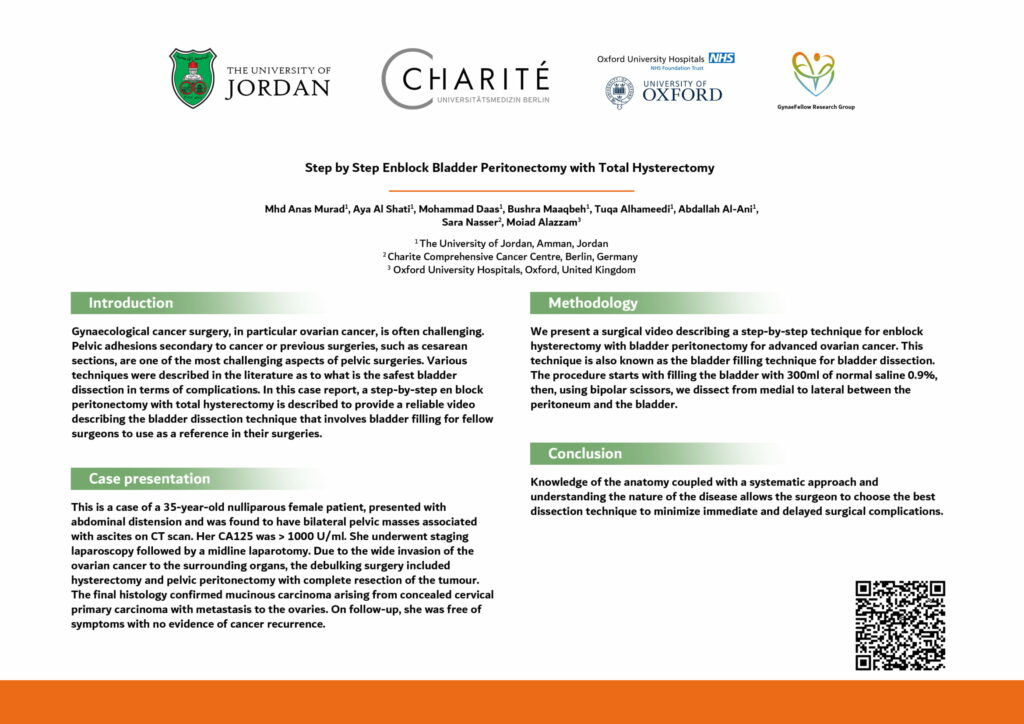Step by Step Enblock Bladder Peritonectomy with Total Hysterectomy
Authors:
Mhd Anas Murad1, Aya Al Shati1, Mohammad Daas1, Bushra Maaqbeh1, Tuqa Alhameedi1, Abdallah Al-Ani1, Sara Nasser2, Moiad Alazzam3
Affiliations:
1Faculty of Medicine, University of Jordan, Amman, Jordan
2Charite Comprehensive Cancer Centre, Berlin, Germany
3Oxford University Hospitals, Oxford, United Kingdom
Introduction:
Gynaecological cancer surgery, in particular ovarian cancer, is often challenging. Pelvic adhesions secondary to cancer or previous surgeries, such as cesarean sections, are one of the most challenging aspects of pelvic surgeries. Various techniques were described in the literature as to what is the safest bladder dissection in terms of complications. In this case report, a step-by-step en block peritonectomy with total hysterectomy is described to provide a reliable video describing the bladder dissection technique that involves bladder filling for fellow surgeons to use as a reference in their surgeries.
Case presentation:
This is a case of a 35-year-old nulliparous female patient, presented with abdominal distension and was found to have bilateral pelvic masses associated with ascites on CT scan. Her CA125 was > 1000 U/ml. She underwent staging laparoscopy followed by a midline laparotomy. Due to the wide invasion of the ovarian cancer to the surrounding organs, the debulking surgery included hysterectomy and pelvic peritonectomy with complete resection of the tumour. The final histology confirmed mucinous carcinoma arising from concealed cervical primary carcinoma with metastasis to the ovaries. On follow-up, she was free of symptoms with no evidence of cancer recurrence.
Method
We present a surgical video describing a step-by-step technique for enblock hysterectomy with bladder peritonectomy for advanced ovarian cancer. This technique is also known as the bladder filling technique for bladder dissection. The procedure starts with filling the bladder with 300ml of normal saline 0.9%, then, using bipolar scissors, we dissect from medial to lateral between the peritoneum and the bladder.
Conclusion:
Knowledge of the anatomy coupled with a systematic approach and understanding the nature of the disease allows the surgeon to choose the best dissection technique to minimize immediate and delayed surgical complications.

